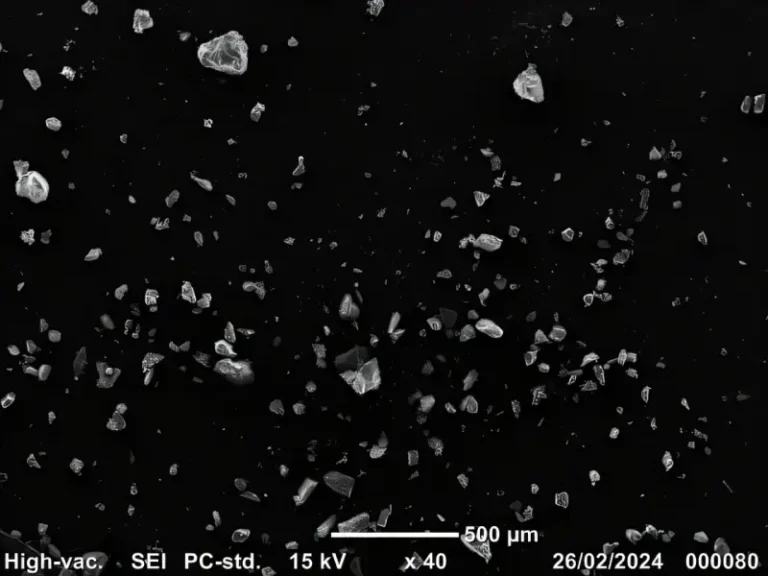Rock on Mars may contain evidence of ancient microbial life
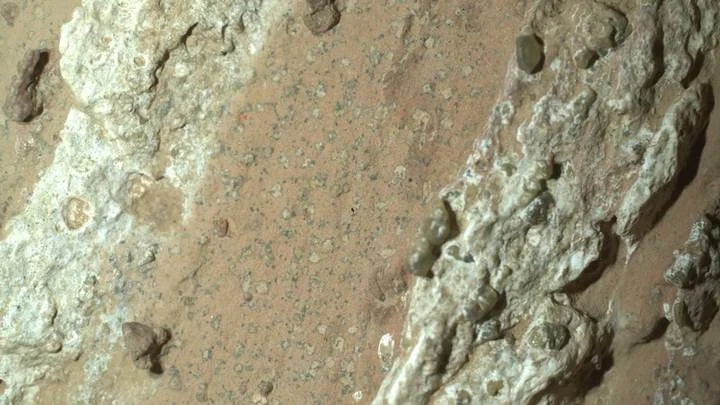
NASA’s Perseverance rover has found an intriguing rock that may contain evidence of ancient microbial life on Mars. This rock, called “Cheyava Falls”, has attracted the attention of the scientific team due to its fascinating characteristics that suggest the possibility of microscopic life in the distant past of the red planet.
The Discovery of Cheyava Falls
Cheyava Falls, an arrowhead-shaped rock, is located on the northern edge of Neretva Vallis, a 400-meter-wide river valley carved by waters that once flowed into the Jezero crater. The rock was collected on July 21 and represents the 22nd rock core sample obtained by Perseverance.
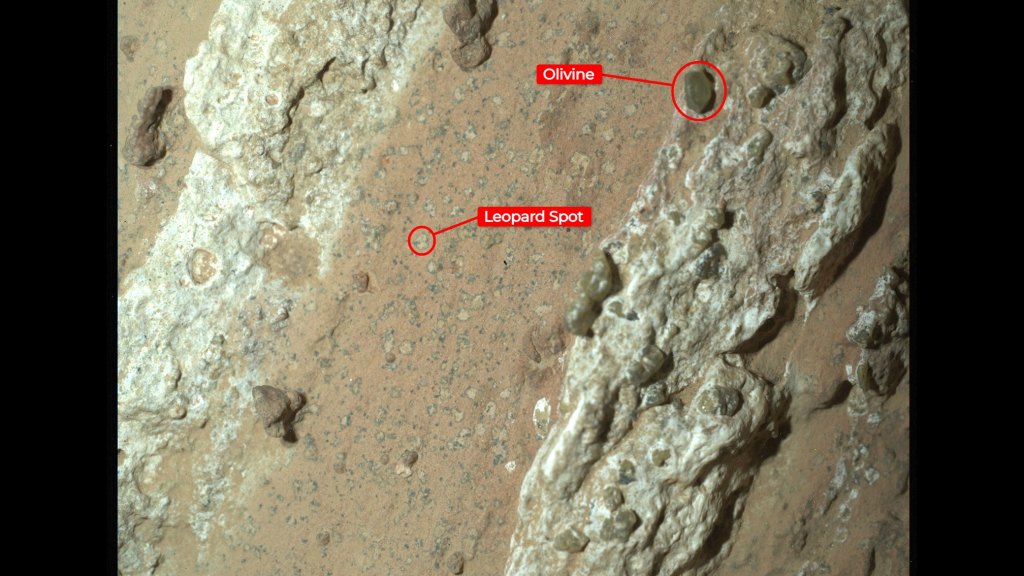
The instruments on board the rover revealed that the rock has chemical signatures and structures that could have been formed by life billions of years ago, when the area was covered by flowing water. However, more research is needed to confirm this hypothesis, as other explanations are also being considered.
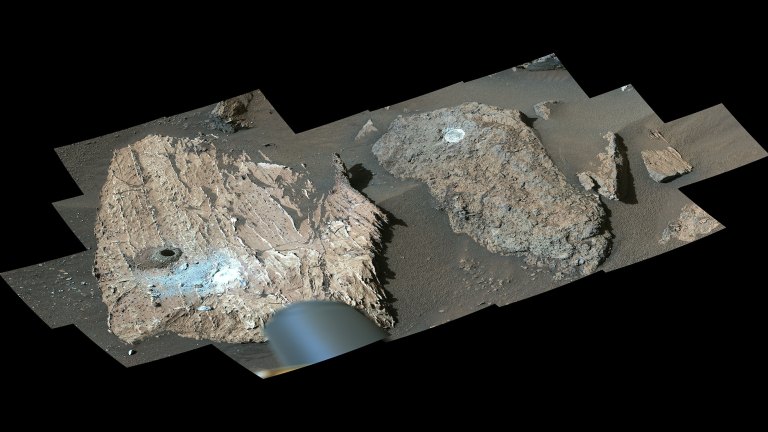
Organic compounds and signs of life
Scans made by the SHERLOC (Scanning Habitable Environments with Raman & Luminescence for Organics & Chemicals) instrument indicate the presence of organic compounds in the rock. Although these compounds are the building blocks of life, they can also be formed by non-biological processes. “Cheyava Falls is the most intriguing, complex and potentially important rock ever investigated by Perseverance,” said Ken Farley, Perseverance project scientist at Caltech in Pasadena. “On the one hand, we have our first convincing detection of organic material, distinctive colored stains indicative of chemical reactions that microbial life could use as an energy source, and clear evidence that water – necessary for life – has already passed through the rock. On the other hand, we have not been able to determine exactly how the rock formed and to what extent nearby rocks may have heated the Cheyava Falls and contributed to these features.”
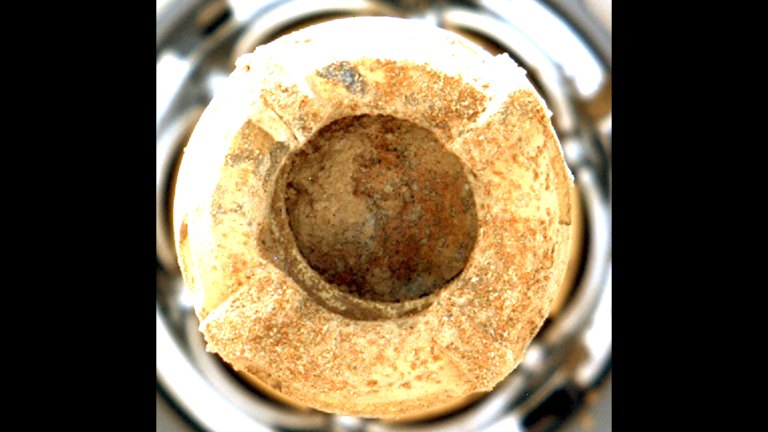
Intriguing features of the rock
More detailed analysis of the rock revealed large white veins of calcium sulphate and bands of reddish material, suggesting the presence of hematite, a mineral that gives Mars its rusty hue. When examining these regions, Perseverance found whitish patches surrounded by black material, which the PIXL instrument determined to contain iron and phosphate. “These spots are a big surprise,” said David Flannery, an astrobiologist and member of the Perseverance science team from Queensland University of Technology in Australia. “On Earth, these types of features on rocks are often associated with the fossilized record of microbes living in the subsurface.”

The scientific team is considering the possibility that the rock was initially formed as a mud with organic compounds, which solidified and was later altered by a second fluid flow, creating the calcium sulphate veins and stains observed. “This is the kind of fundamental observation for which SHERLOC was created – to look for organic matter, because it is an essential component of the search for past life,” said SHERLOC principal investigator Kevin Hand, from NASA’s Jet Propulsion Laboratory in southern California, which manages the mission.
The Role of Olivine
Another curious aspect of Cheyava Falls is the presence of olivine crystals, a mineral formed from magma. Olivine may be related to rocks formed by the crystallization of magma higher up in the valley. The team is investigating whether the olivine and sulphate were introduced into the rock at uninhabitable temperatures, resulting in a non-biological chemical reaction. “We’ve used lasers and X-rays on this rock and photographed it literally day and night from just about every angle imaginable,” said Farley. “Scientifically, Perseverance has nothing more to offer. To fully understand what really happened in the Martian river valley at Jezero Crater billions of years ago, we would like to bring the Cheyava Falls sample back to Earth so that it can be studied with the powerful instruments available in laboratories.”

Future of research
To fully understand the formation and history of Cheyava Falls, the scientific team would like to bring the sample back to Earth for more detailed analysis with advanced instruments. Perseverance plays a crucial role in NASA’s astrobiology mission, collecting samples that may contain signs of ancient microbial life and characterizing the geology and climate of Mars. “We designed Perseverance’s route to ensure that it goes to areas with potential for interesting scientific samples,” said Nicola Fox, associate administrator of the Science Mission Directorate at NASA headquarters in Washington. “This trip through the Neretva Vallis riverbed was worthwhile because we found something we’ve never seen before, which will give our scientists plenty to study.”
The Mars Sample Return Program, a collaboration between NASA and ESA, aims to send spacecraft to collect these samples and return them to Earth. This mission is part of NASA’s exploration approach, which includes Artemis missions to the Moon to prepare for human exploration of Mars.
The Mars 2020 Perseverance mission is part of NASA’s Moon to Mars exploration approach, which includes Artemis missions to the Moon that will help prepare for human exploration of the Red Planet. The rover will characterize the planet’s geology and past climate to help pave the way for human exploration of Mars.

